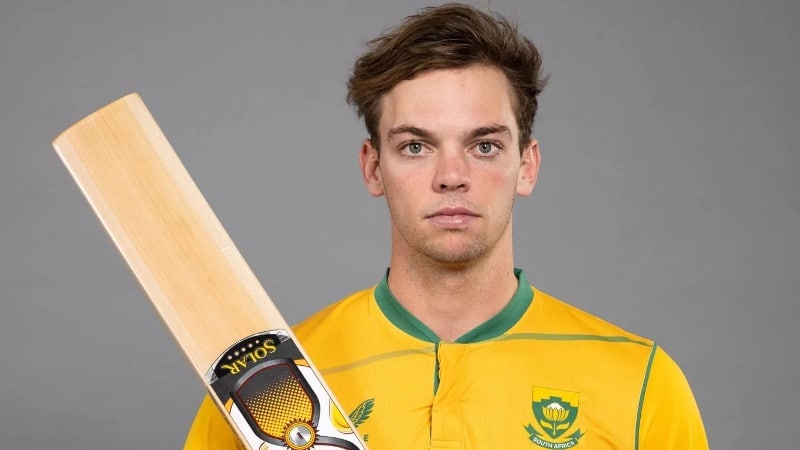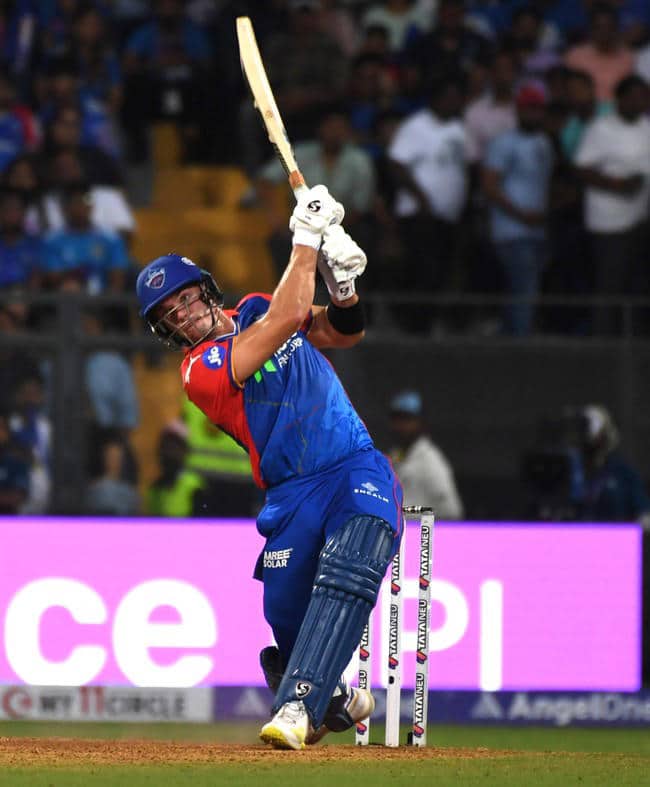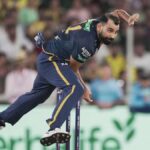Authors: CS Chiwanza
Delhi Capitals were faced with a seemingly insurmountable chase after Mumbai Indians had piled on 234 or 5 at the Wankhede Stadium in Mumbai on April 7. It was not insurmountable in Tristan Stubb’s mind though. Because he knows he has the power-hitting to hunt down any total.
At the start of his innings, Stubbs faced a Piyush Chawla delivery that landed on middle stump. He went down on one knee, met the ball on its way up, and heaved it into the second tier of the stands over deep midwicket. Three balls earlier, Stubbs had tried the same shot. He hadn’t middled the delivery, but such was the power behind the stroke that it still beat a leaping Tilak Varma, who had hoped to parry it back into the ground. Delhi didn’t win, but Stubbs’ eventual 71* off 25 got them a lot closer than anyone would have thought possible.
The 23-year-old Stubbs is part of a generation of power hitters in South Africa, following in the footsteps of the ball-blitzing middle-order trio of Aiden Markram, Heinrich Klaasen and David Miller. Naturally, he also intentionally borrows a lot from each one’s skillset.
His power-hitting journey started in 2019 when Mike Smith took notice of him. The former South Africa cricket team batting coach was the Grey High School Director of Cricket/Cricket Professional – a former professional cricketer employed by the institution to assist the first XI head coach – at the time.
Smith was one of the early adopters of the methods of Julian Wood, who had been studying baseball batters and coaching methods in order to port the lessons to cricket. Wood didn’t believe one needed to bulk up to be a better hitter of the cricket ball. His focus was on swing planes and exit velocity.
Smith found his perfect student in the teenaged Stubbs, who was keen to develop his game. “Cricket was Tristan’s first love,” says Mandy, his mother.
As a youngster, Stubbs spent more time on the porch hitting balls hanging from the rafters with the thinnest bat he could find. There was a time when his father could have lived with a hand planer attached to his hand with Stubbs constantly asking him to trim his bats. There was no proper cricket club in Knysna. The best they had was the Knysna Sports School, a multi-code centre that was more of a physical education arena than a place where kids with big ambitions received top-class training.
Stubbs hit more balls on his porch than he did at the Knysna Sports School. To get a proper team environment, his mother drove him to Oudtshoorn, a town two hours away, twice a week, and sometimes three times. “My life consisted of driving around, carting Tristan and his sister from game to game or wherever they had to be,” says Mandy.

At Grey High School, Stubbs replaced the porch with nets. He set stall there and spent a lot of his free time hitting balls. That is where Smith first saw him. The coach had been impressed by Stubbs’ movement on the hockey field earlier in the year. “You often equate tall guys with maybe being a little bit sluggish, a little bit slow. Stubbs was unbelievably agile. He has some incredibly quick feet for a big person. You know, if you watch him on the hockey field, he’s flipping lightning and he changes direction quickly, he’s got really fast feet,” says Smith.
The essence of Wood’s philosophy was not on bulking up but on overloading technique and lots of isometric movements. In some of his drills, he uses soft weighted balls that sit on the bat for a long time. So, batters have to get their hands through the ball for it to go anywhere. If they do it right, the balls go forward and stay round. If they do it wrong, the balls go sideways and lose shape, assuming an oval shape. In others, players practice hitting with weights attached to their arms, wrists and hips.
Smith’s practice sessions with Stubbs were an interpretation of Wood’s methods. Like Wood, he also incorporated lessons from baseball hitting coaches. In one drill, Smith used a 3kg medicine ball. Stubbs showed up for this one in complete gear, helmet, pads and gloves. The coach would then ask him to assume his power stance, his best position to hit long balls. Unlike most batters with an orthodox style, in this posture, Stubbs resembles a baseball hitter and not a cricketer.
“In the past, a lot of people looked at him like you can’t set up like that, you can’t have your bat open. It might not be perfect in the MCC manual, but it’s unbelievably good for Tristan Stubbs,” says Smith.
He would throw a three-kilogram medicine ball toward Stubbs. Maintaining his power stance, Stubbs grabbed the ball and threw it back to Smith in one smooth motion. The action ‘activates’ the legs, glutes and core. Stubbs maintained the pose after each throwback to Smith, making sure that his finish position was strong as well.
“We normally did three to four rounds of six medicine ball throws. Through it, Stubbs stayed almost like a coiled spring for as long as he could. This helps with explosiveness when playing shots,” says Smith.
The medicine ball drills had variations depending on the shot Stubbs was working on. It was followed by 12 underhand throws from the halfway point. In this one, Stubbs was required to maintain his power stance as he belted deliveries into the same area. Smith used bowling machine balls for this part of the drill. They are more durable compared to regular cricket balls. Smith overloaded Stubbs’ technique in a variety of creative ways and also helped him work on his range hitting.

The exercises placed him light-years ahead of his peers and when he made his T20 debut for the Warriors two years later, he looked ready-made for professional cricket. Stubbs blasted seasoned pacers and spinners out of stadiums. That year, he spent his off-season in the Netherlands playing in the Topklasse where he mashed bowlers. The Dutch powers-that-be were motivated to lure him into the Dutch national team. Stubbs’ grandparents have Dutch passports. When word of the ploy reached Cricket South Africa, the board reacted by creating a spot for him at the Cricket South Africa National Academy. Shortly afterwards, Stubbs featured in a South Africa A match against Zimbabwe.
From then onwards, things moved fast. In 2022, he made his IPL debut. That year he also featured in his first match for South Africa. And while he is proud of Stubbs’ achievements, Smith refuses to take credit for the batter’s power hitting, saying the young man relentlessly worked on his fitness and game. According to Runeshan Moodley, the Warriors’ strength and conditioning coach, Stubbs always enjoyed high-intensity training.
“I remember him running the highest level (21.2) on the yo-yo intermittent recovery test back when he was still 18 at one of our TAP U19 camps. His commitment to his fitness definitely helped his power game,” Moodley says.
“You can teach a lot of things in cricket, but one of the things you can’t teach is hands. Tristan has got crazy acceleration through the hitting zone, you know, through his point of contact. He has that different hand speed through the ball. Some players hit the ball really well and they’ve got the beautiful sound of the bat, that different pop… Stubbs is one of those players,” says Smith.
Smith’s claim is backed up by Moodley’s Fitlight visual exercises which test players’ reaction and response time to light prompts. The coach conducts them regularly with the Warriors’ players. Stubbs stands out each time.
In 2022, Stubbs featured twice in the IPL. In 2023 he played in two matches, again. In 2024, he is bringing that popping sound to stadiums around India, smashing bowlers out of the park. In his five outings for Delhi this year, he has scored 174 runs for an average of 58 at a strike rate of 193. In 2024, Stubbs is bringing to the IPL what he has shown to South African fans for the past two years.




